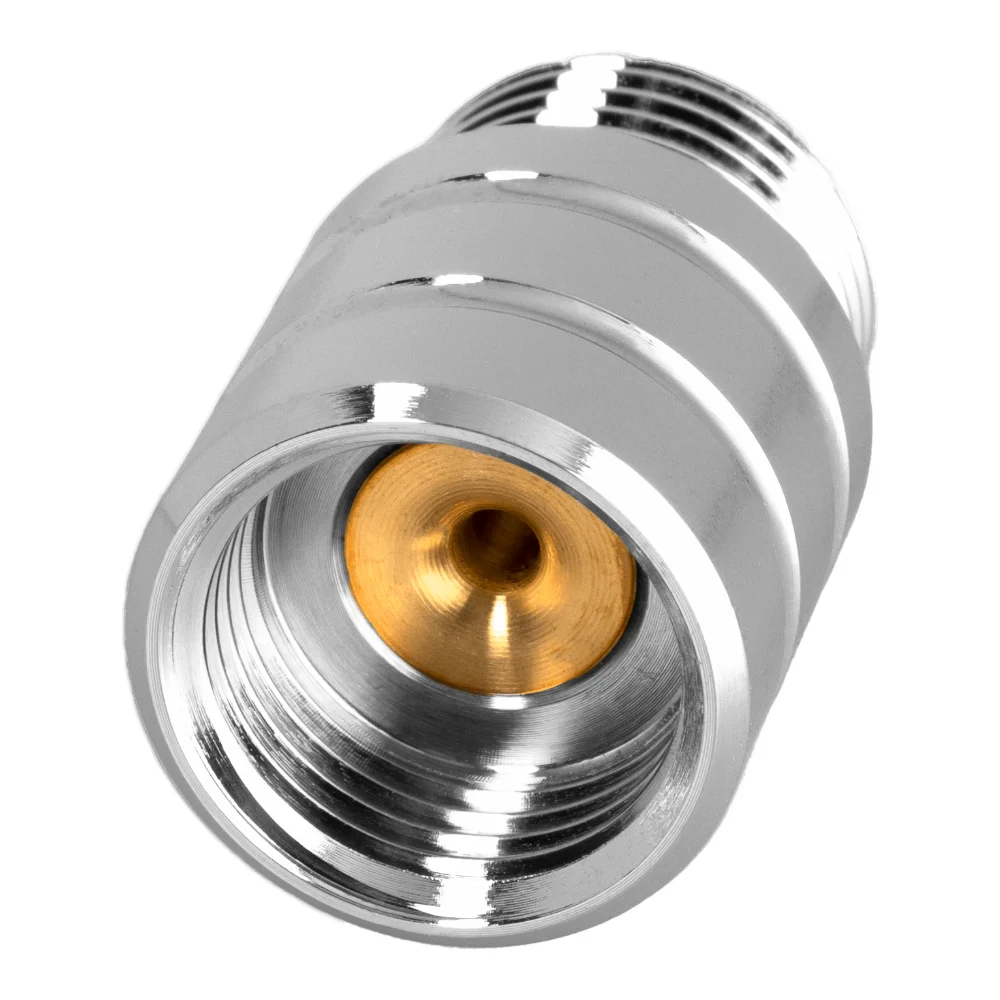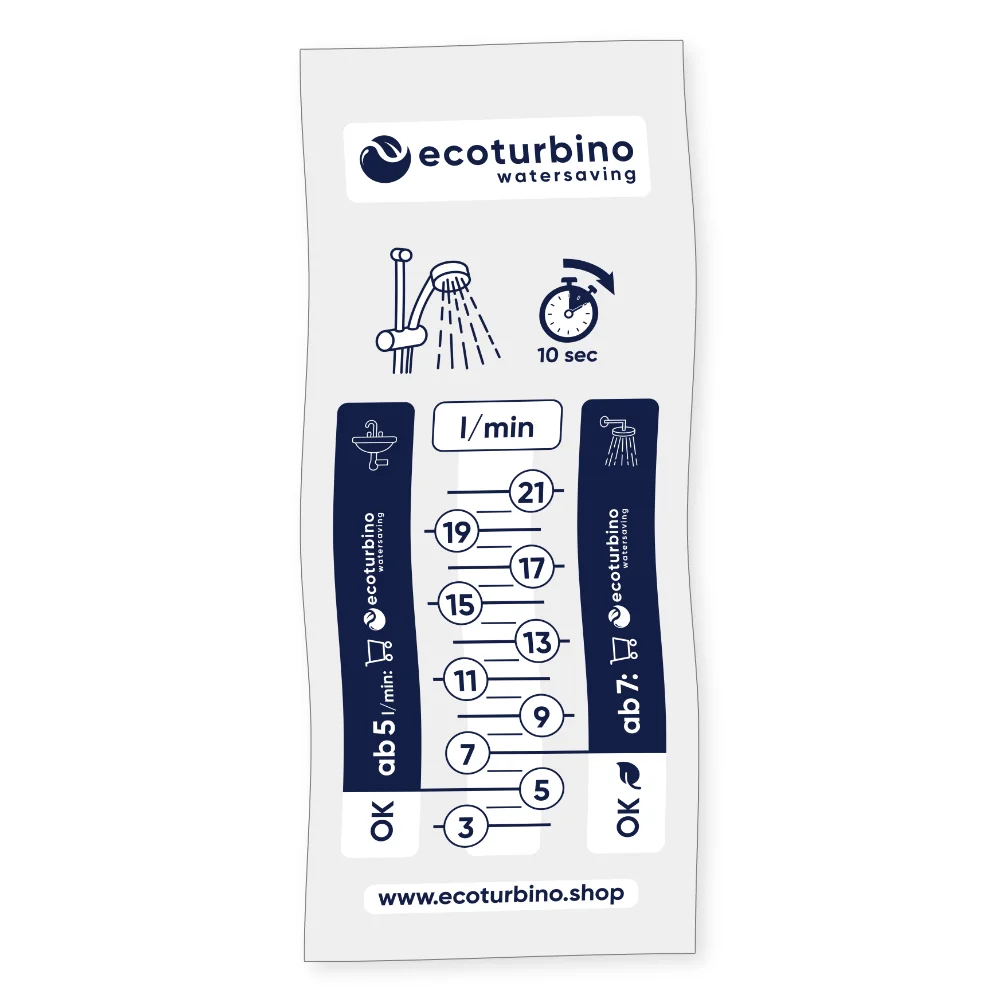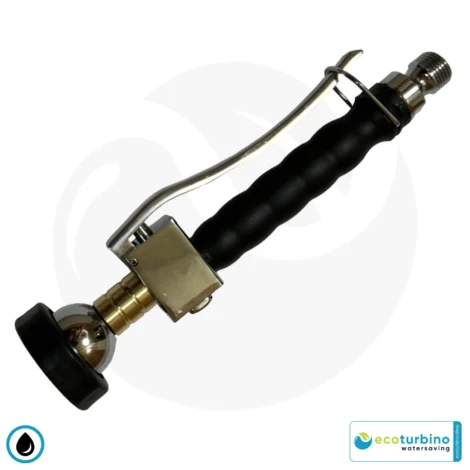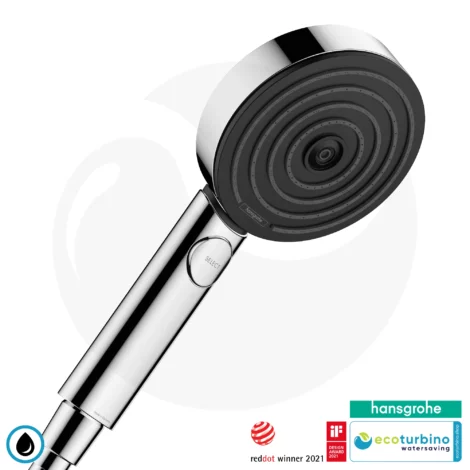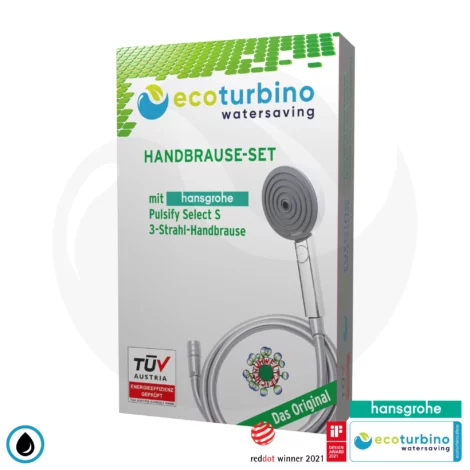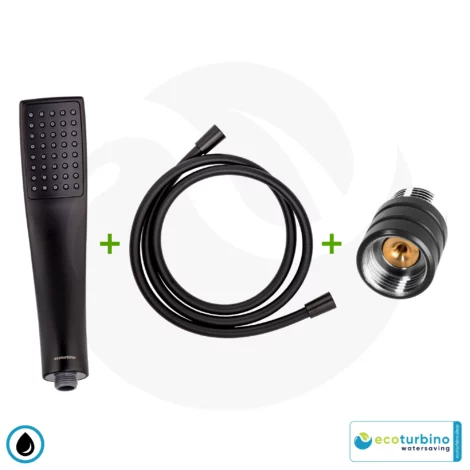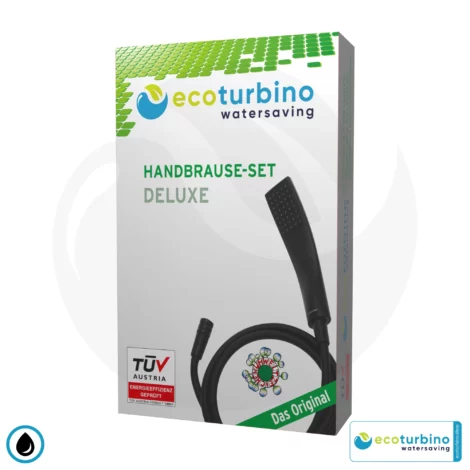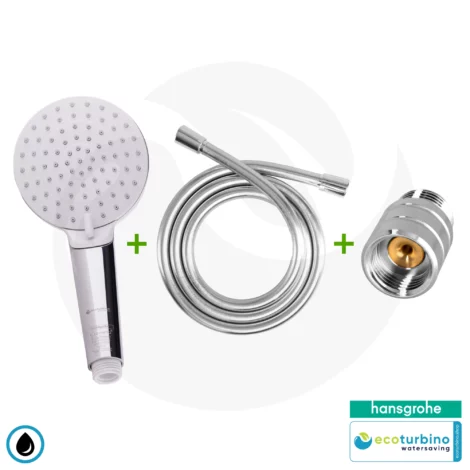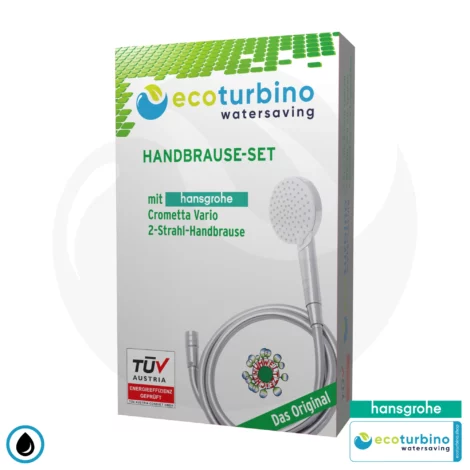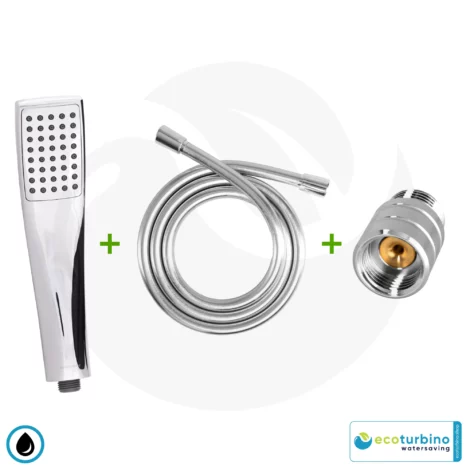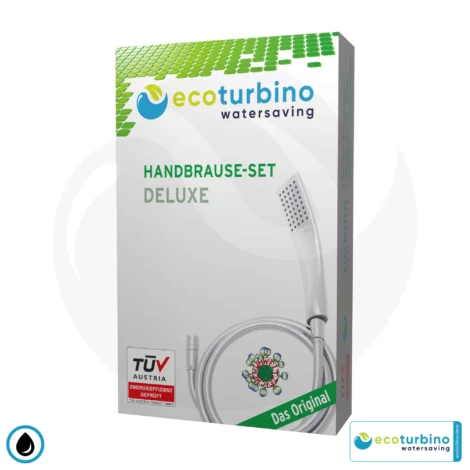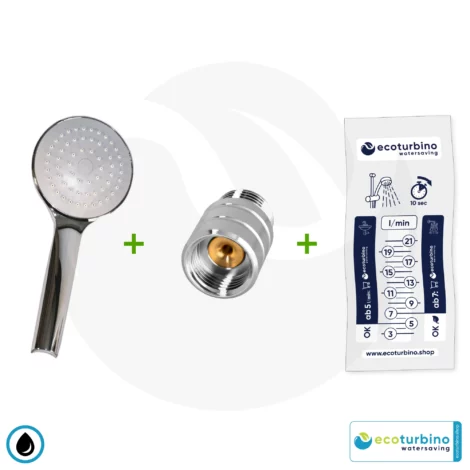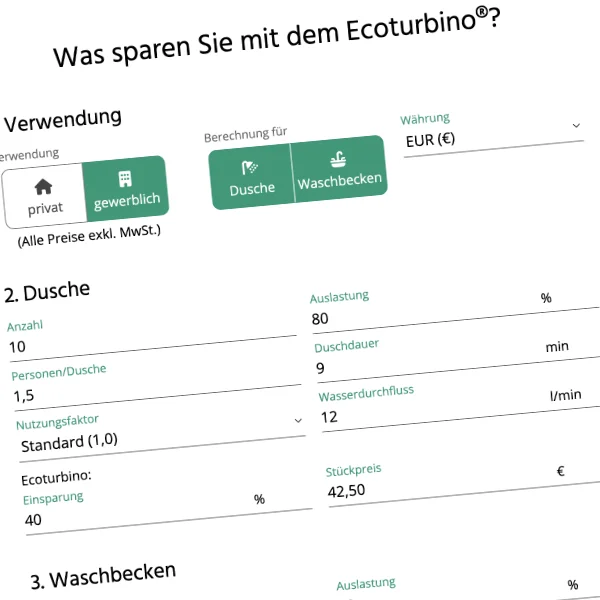Blog
High water consumption when showering and washing: how to save water – or – how to save water and money when showering without sacrificing showering pleasure!
High water consumption when showering – do you know yours? And – how can water consumption be reduced while showering? | Documentation by Marktcheck SWR
The truth and important to note: With every litre that flows unnecessarily through the shower, money also disappears down the drain.
Although everyone is keen to save electricity, the importance of the most important resource – precious drinking water – is often overlooked. In most households, water consumption is so unnecessarily high and people don’t even realise it!
Why is this “not thinking about water consumption”?
Presumably because the water bill is issued at long intervals and hot water preparation is hidden in the energy costs. You simply don’t have it in your head and almost nobody knows the amount of water used for one shower.
Every day, when brushing our teeth, washing our hands and showering, large quantities of water flow through the pipes and immediately afterwards, almost unused, down the drain.
Although it is obvious that the water should only run for as long as it is really needed and that it should be switched off during other activities such as brushing teeth, this is often neglected for reasons of convenience.
Perhaps high water consumption is good for others. Perhaps the waterworks, sewage treatment plants and local authorities are happy about it, especially because of the price increases that have already begun.
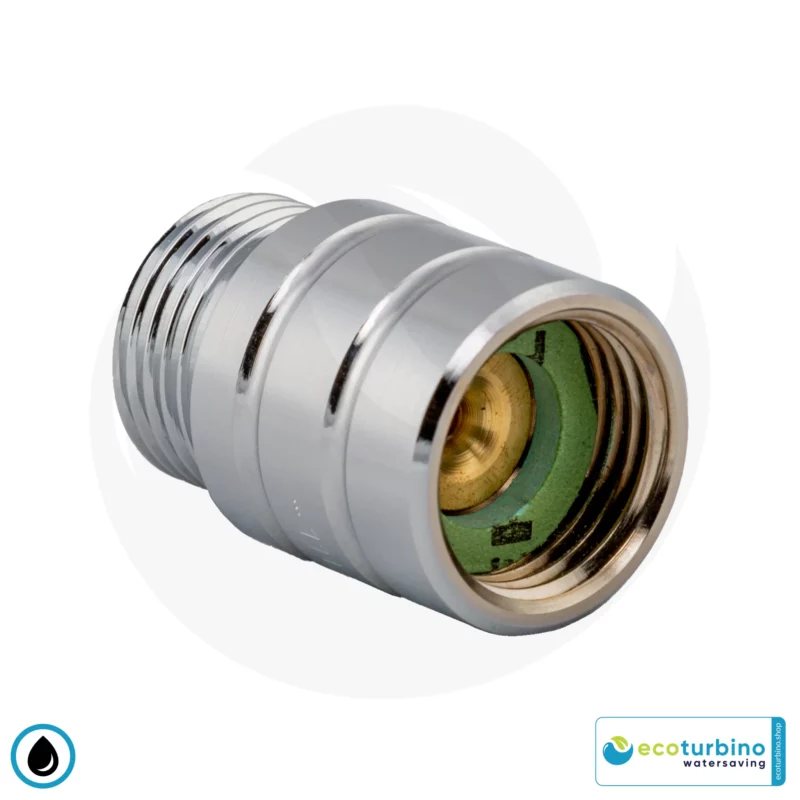
Fortunately, however, there are practical solutions such as our ecoturbino, many other water-saving shower heads or aerators that significantly reduce the water flow – “with and without” compromising the quality of the shower experience.
This allows you to significantly reduce your daily water consumption. The best thing is that these ecoturbino systems, shower heads and aerators are easy to replace, so you can start saving water straight away.
Perhaps reducing water consumption across the board would be good for us all. But perhaps the waterworks, sewage treatment plants and local authorities will NOT be happy about it, especially because they will be able to charge us much less despite the price increases?
Are you happy about these products, but presumably not the “water and wastewater billers”?
Some interesting facts: Water consumption for personal hygiene
On average, each person uses up to 180 litres of water every day. The majority of this is flushed virtually unused down the drain from showers, washbasins and toilets.
For personal hygiene alone, around 40 per cent of water consumption goes down the drain – even though it is practically clean fresh water.
This also has a negative impact on energy consumption, as the water is usually heated. This could be done in a more resource-efficient way.
Only 4 per cent of treated drinking water is used for cooking or drinking, while the largest consumption in households, hotels and similar establishments is for bathing and showering, flushing toilets and washing laundry.
Water consumption when showering also varies greatly
It is difficult to say in general terms how much water (and therefore money) flows through the drain when showering, as consumption depends heavily on the shower system installed and individual showering habits.
Conventional shower heads consume an average of 12 to 17 litres of fresh hot water per minute.
A 10-minute shower session can therefore consume up to 160 litres of water per shower! This time passes particularly quickly if the water continues to run happily when soaping or shampooing.
According to the Hamburg Water Consumption Study 2021, an average shower in Hamburg lasts around 9-10 minutes. According to the study, the water consumption for a shower with rain effect is between 120 and 170 litres – an impressively significant amount of water.
Measuring your own water consumption – why not?
It is easy to check how much water your shower uses or how much water flows through the shower head.
- Simply place a 10 litre bucket in the shower, hold the hand shower in it and turn the tap on full for 30 seconds.
- Look at your watch, preferably the stopwatch, until the 30 seconds are up.
- Then multiply the amount of water by two.
Is it 12 litres or more? Then you should actively think about your senseless fresh water consumption!
In addition to wasting water, energy consumption for hot water production is also a burden on both the environment and your wallet. Modern technology such as our ecoturbino water-saving adapter and a few simple tricks can help to reduce water wastage.
How can I save water in the bath and shower?

Modern water-saving shower heads only let through around seven litres of water per minute. They have shower interrupters or reduction devices such as small nozzles or spray nozzles.
In this way, the amount of water required for a five to ten minute shower can be dramatically reduced to between 35 and 70 litres. An average household of three people can save around 450 euros and 650 kg of CO2 emissions per year.
The cleaning effect with low-flow shower heads is generally the same, but showering comfort may be slightly impaired due to the formation of hard jets of water.
This negative shower effect is prevented with our ecoturbino water-saving adapter. The philosophy of our water-saving product is to keep the pleasant jet of water the same by incorporating 40% air – perhaps even making it softer.
It also has a few additional tricks up its sleeve with the 7 in 1 effect.
Most large overhead showers use slightly more water than smaller hand showers. Therefore, the possibilities for savings here are limited, but not with the ecoturbino adapter. However, there are rules with maximum shower size.
Saving water in the shower with simple tricks
If you decide to buy an economical shower head, you should compare the different models carefully: Some so-called water-saving shower heads use between 7 and 9 litres per minute, which is significantly less than the average 12 to 17 litres, but can still add up to a considerable 20 m³ of water over the course of a year in a four-person household.
Info: Summer heat can lead to increased water wastage: Every year in summer, when one heatwave follows another, the demand for water also rises sharply. According to the German Association of Energy and Water Industries (BDEW), up to 40 to 60 per cent more fresh water is consumed on hot days.
Reducing shower water consumption – What can you do immediately?
Reduction of shower time
It is advisable to minimise the time spent in the shower. Although the warm water is refreshing and many people need time to wake up in the morning, longer shower times also mean a higher consumption of resources. Basically, personal hygiene should only take a few minutes. Anything more than that is a luxury that translates into higher costs.
Reducing the shower frequency
Showering every day may be part of the morning routine for many people, but it is not absolutely necessary. Showering too often dries out the skin and damages its natural protective film. Particularly in cold seasons, it is often sufficient to clean certain parts of the body at the sink.
Even if you shower every other day, you will stay well-groomed and reduce your consumption by almost half. Your hair will also stay beautiful and supple for longer.
Switch off the water in between
To save water, you should interrupt the flow of water while soaping and also not use the full flow rate when shaving. Use such opportunities to save water. A thermostatic mixer tap is also advantageous as it keeps the desired temperature constant so you have hot water straight away.
Lowering the water temperature
Avoid excessively hot temperatures when showering, as these can damage the skin. Pleasantly warm water has a soothing effect, but should not be warmer than 38 degrees.
For a rain shower, lukewarm temperatures are sufficient. Cold water also has the advantage of having an invigorating effect, stimulating the circulation and strengthening the immune system. It also reduces energy consumption and cuts costs.
Conclusion – utilising water-saving optimisation potential
There are many factors that you can influence when it comes to water consumption. It is advisable to become aware of your own consumption behaviour and develop strategies to conserve resources.
Choosing the right technical equipment such as shower sets, high-quality taps or economical shower heads can also help to take both personal preferences and practical features into account and protect both the environment and your own savings.
